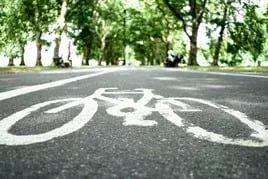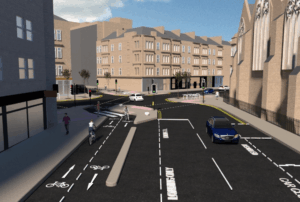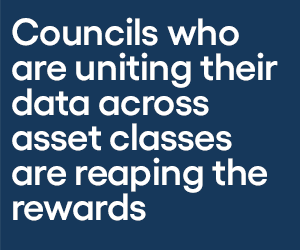The Government is to invest ‘unprecedented levels of funding’ into cycling and walking as part of plans to improve heath and inequality, Transport Secretary, Louise Haigh, has said.
A national network of safe cycle routes could cut GP appointments “by hundreds of thousands, if not millions a year” by helping people incorporate more physical activity into their lives, according to Ms Haigh, who also sits on the government’s health mission delivery board, reports the Guardian.
She added that access to safe cycle routes was “essential” to tackling the country’s carbon footprint.
“We’re in a climate crisis. We’re in a public health crisis; getting people walking and cycling and moving more are essential to solving both of those in the immediate term and in the long term,” she said. “There’s lots of evidence to show that will reduce the number of GP appointments by hundreds of thousands, if not millions, a year.”
Transport is the largest single contributor to the UK’s carbon emissions, and while cycling wasn’t specifically in the Labour manifesto, bar a reference to “active travel” – a catchall term for walking, cycling and wheeling (as wheelchair and mobility aid users do) – Haigh says it will be “utterly essential to developing our national integrated transport strategy”. Almost three-quarters of trips in England are less than five miles, said the Guardian report.
This strategy will include long-term funding settlements, which Haigh says will save money and improve the consistency of transport networks, particularly walking and cycling routes, including the National Cycle Network, which is run by the charity Sustrans. Historically, cycle routes, unlike roads and rail, have had little to no multi-year funding settlements, making strategic planning and delivery of cycle networks all but impossible, and leaving substantial gaps in the quality and coverage of routes. A bidding system involving tens of different funding pots (there are up to 45 different funds for active travel) has historically distributed cycling money unevenly across the country and “pitted councils against each other”.
“We absolutely want to make sure that we invest at unprecedented levels,” Haigh told the Guardian. “We just want to make sure that the funding is delivered where it’s needed … rather than where they’ve got the best bid writers, and where they’ve been good at hoovering up resources.”
She said: “Cycle lanes and active travel work isn’t properly joined up,” adding that it was an “anomaly” that the National Cycle Network was run by a charity while the government runs roads and rail.
The last government introduced multi-year funding for cycling during the pandemic, only to cut it by more than half. These cuts, a Labour analysis estimated last year, would cost more than £2bn in the long term, through their impact on health and the wider economy. Cycling and walking are considered to have very high returns for taxpayers’ money, at £5.62 for each £1 spent – double the returns of roads. The decision resulted in a legal challenge from campaigners, which was rejected.
The government is due to announce the contents of an internal review of transport infrastructure projects. Asked about the £16bn of trunk road projects, which have been called “low value” by campaigners, Haigh said: “We’re looking at all capital projects, and where that money should be best spent. In a world where there’s not much money, we want to make sure it’s spent … [to] get the best bang for our buck.”
“It has knock-on effects everywhere else: it gets people healthier, it reduces the burden on the NHS because people are living healthier lives for longer,” she said.
“I am here to make sure that education can deliver those educational opportunities and make sure that people from all backgrounds can achieve no matter what postcode they’re brought up in. [Transport is] … essential for delivering growth and obviously net zero and safer streets, safety on public transport networks, safety for women cycling down dark alleyways: they can’t do any of it without transport.”
Cycling and walking are cost-effective means of travelling short distances, and an important way for people to get regular exercise. Research shows most people would like to cycle more: however, a lack of safe routes and a fear of sharing the roads with motor traffic puts cycling out of reach for most people, particularly women. Men in England make three times as many cycling trips as women.
Haigh also said the government would develop a new road safety strategy. Transport in Britain is devolved, and England’s previous road safety strategy lapsed in 2019, leaving it the only country in the G7 without one. In 2023 an estimated 29,643 people were killed or seriously injured on Britain’s roads. While three-quarters of traffic fatalities are men, fear of traffic danger affects women’s transport choice disproportionately. Haigh said the government would use “behavioural science and analysis” to understand and tackle some of those barriers.
Improving and building cycle routes, along with measures to help people use those routes from childhood onwards, “can increase usage [of cycles] by hundreds and hundreds of per cents”, she added. In one section of the Trans Pennine Trail in South Yorkshire there was a 700% increase in usage after it was resurfaced.
Ms Haigh added: “Rural poverty is a real blight, and it’s not something that’s really properly considered. Car ownership now is just so expensive, insurance as a young driver is completely out of reach for a lot of people. So having that access to safe cycle routes is a basic element, is a basic tenet of social justice”.
PIC=.GOV.UK























